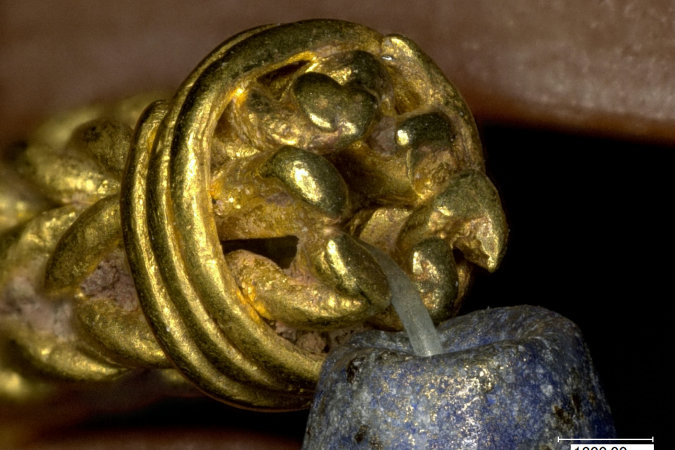Optical Microscopes in the House of Archaeology: Microscopy Room of the Deutsches Bergbau-Museum
The examination of samples with optical microscopes is a principal step in archaeological analysis. It is available before further processing with highly modern and sensitive inorganic analyses, such as the element-, isotope- and phase analyses. Mineralogical and metallographic polarization microscopy enables fast and inexpensive assessments of samples, including qualitative and semi-quantitative results concerning their chemical composition, firing and/or manufacturing temperature, manufacture itself and production sequence.
The Microscopy Room is situated in the premises of the Deutsches Bergbau-Museum within the House of Archaeology. Besides its utilization for research projects, the Microscopy Room is available for all interested students of the RUB. The room includes three microscopes. (1) A user-friendly binocular for instant examination of objects. (2) A research microscope (Zeiss Axiophot) with an internal camera and software for processing of pictures. The microscope offers possibilities such as simple brightfield as well as transmitted light illuminations. Five different functions of the microscope provide magnification up to 500 times. This microscope represents an ideal tool for an examination of archaeological ceramics samples (due to the transmitted light) as well as ores, metal objects and slags (due to the brightfield). Besides taking pictures, the software for processing the photographs allows for measuring, visual implementation and visualisation of the microscopic structures. (3) A digital microscope (Keyence Digital Microscope) enables stationary and mobile microscopy at higher magnifications. A benefit of the method is the possibility of examining objects with an uneven or unevenly reflecting surface. A special technique helps to capture the depth of the examined sample.

In the future, the microscopy room is going to be equipped with more user-friendly and stable microscopes which will enable RUB to offer courses in polarised light microscopy for small groups of students. The room is situated in the House of Archaeology, within the premises of the Deutsches Bergbau-Museum on the third floor.
Available by arrangement
Contact: Dr. Stephen Merkel (stephenWilliam.Merkel@bergbaumuseum.de)
